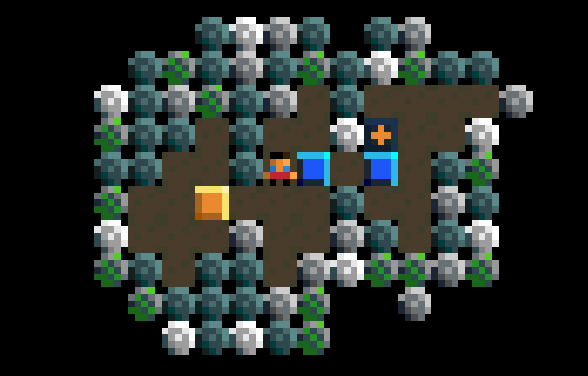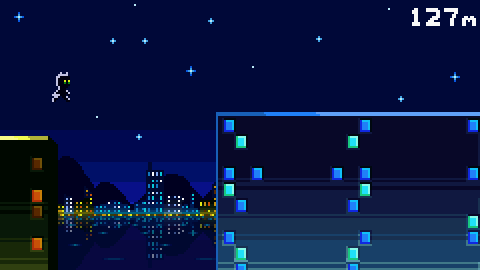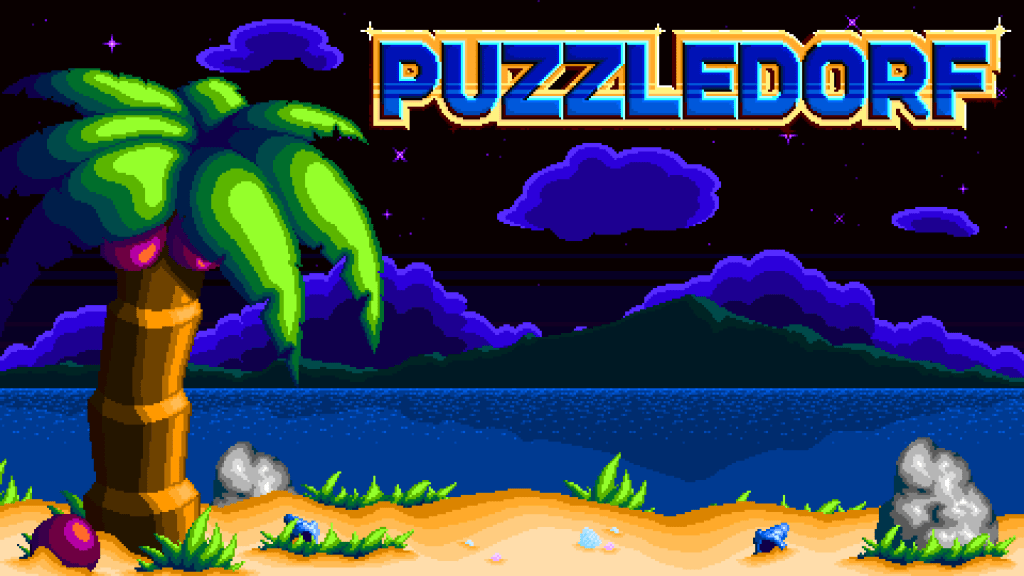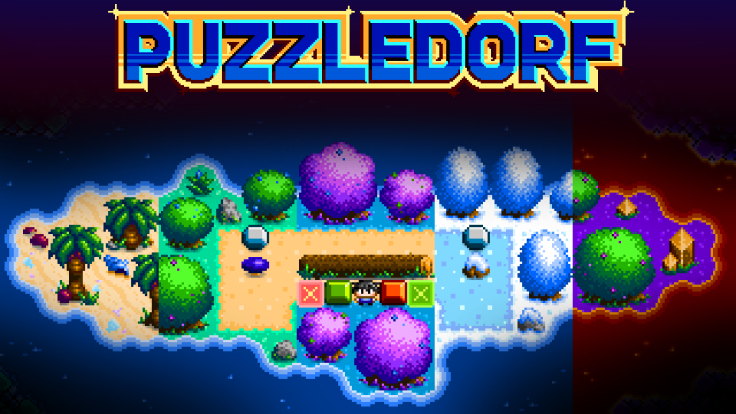I had a dream to make video games. People around me seemed to think I should “get a real job”. I ignored them and went my own way, because this is how I wanted to live my life. Now I’ve made Puzzledorf. This is how I did it.
ABOUT THE DEVELOPER
I’m a solo developer who does everything myself. I taught myself pixel art and game design, and studied music and business. Puzzledorf was developed with Unity and C#. Living in South Australia, this is my first commercial PC game. I have released a number of small hobby projects previously on mobile and web browser, with positive feedback, but this is my first attempt at a larger, commercial game.

DEVELOPMENT BACK STORY
Puzzledorf was 2.5 years in the making. My early experience was making games using visual programming software like The Games Factory, but I realised I’d have more flexibility if I learned actual programming.
I went to the Academy of Interactive Entertainment to study programming. In the midst of this, I discovered Puzzle Script through a friend, a free tool to make block pushing type puzzle games. This inspired Puzzledorf. At AIE, I led 2 teams of 10 students on game projects, which sharpened my design and management skills. I was also learning Unity at the same time as developing the early Puzzledorf prototype.
AIE offer a business incubator program. The incubator is for successful graduates, who prove they have a viable product, to get free office space to work on their game. This lasts for a year. Puzzledorf was my original prototype that I successfully applied to the AIE Incubator for. Development of the game took longer than expected, as games games often seem to do, especially with surprise events like COVID. About a year after the incubator program, the game was finished and released.
CURRENT DAY
Since release, the game has received a limited but very positive response from press, curators and steam players, receiving an 94/100 review from CCGR. Selling copies is harder than expected, but my audience continues to grow and give me positive feedback. I have continued to release free updates for the game, including quality of life updates and free new puzzles, with more updates planned.
I have written several reflective Game Design articles about Puzzledorf, which were also featured on the front page of GameDeveloper.com.
PUZZLE MECHANICS
So how does the game work?

The goal of Puzzledorf is to push the correct coloured block onto the correct coloured target (there are colour blind options). Typical Sokoban (block-pushing puzzle) games have one type of block and target. Puzzledorf also has boulders that have no destination; they are purely obstacles. This combination of boulders and different block colours, as far as I’m aware, is unique to my games. It was an idea I originally experimented with on my free Newgrounds games back in 2014.
Having the boulders and multiple block colours may seem like a subtle change, but it makes it easier to create situations that look simple, but are more complex than they appear. This leads to far more interesting puzzle designs and gameplay experiences than having just one block type.

DESIGN PHILOSOPHY
Puzzledorf was based around the question, “What makes a good puzzle?” I spent a long time making puzzles and watching people play them, trying to answer this question – in a way, that started back in 2014. But with the AIE Incubator, I pursued an answer to this question with a passion. Through repeated testing, I refined it down to a few guidelines:
- Something that (generally) looks simple, but is harder than it looks
- The problem is clearly conveyed at a glance, with clean design
- Solving a puzzle should have a clear ‘A-ha!’ moment
- Accessibility by teaching through experience and design
- To try and be welcoming to new players by growing their skills and not jumping difficulty too soon
- To try and challenge all skill levels
- Difficulty is created through requiring advanced puzzle solving techniques, not by creating larger puzzles with more elements
These are the guidelines I tried to apply to Puzzledorf. In regards to accessibility, I also added colour blind modes.
Testing suggested that as puzzles got larger and more complex, people were more likely to be scared off and not even attempt them. I believe this is partly because our brains have trouble taking in the visual information of large puzzles after a certain point. Therefore the puzzles problem, and potential solutions, are not immediately obvious.
Thus, people don’t want to try solving the larger puzzles at this point, because they don’t feel they can see a solution. Whereas when a puzzle looks simple, you start to see potential solutions, and feel like having a go. Even if you get stuck, you think you can see another solution to try, so you keep playing, and when you finally get that ‘a-ha!’ moment and solve it, it’s incredibly satisfying. That’s my theory.
Furthermore, by increasing difficulty gradually, and teaching new players the appropriate skills as they go, it makes it easier for newcomers to experience the game, but also challenges veterans with the harder, later puzzles.
You can look at further reading on my Puzzledorf design principles here.








Leave a comment